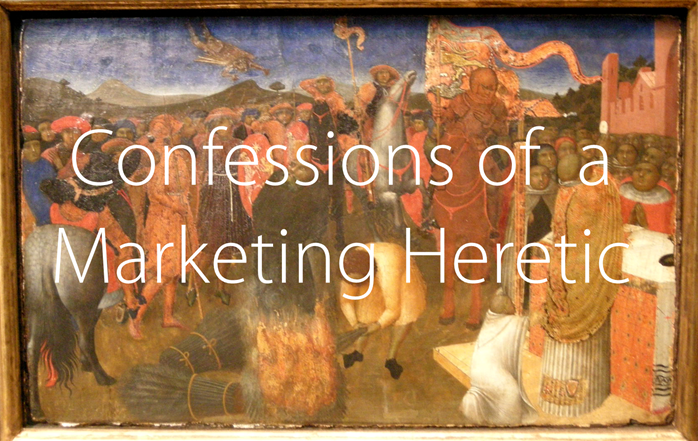I have a confession to make. A heresy that I will probably ensure that I get burned at the stake. Or, perhaps, the 21st century equivalent, trolled on Twitter.
Most of us marketers should just basically ignore what the top brands are doing. I believe that Apple, Google, Coca-Cola, Microsoft, Toyota, IBM, Samsung, Amazon, Mercedes-Benz and GE (Interbrand’s top brands in 2016) are totally irrelevant to the typical marketer. These brands are the marketing equivalent of the 1%, not the 99% that most of us actually inhabit and work in. Yes, just maybe the mythical, iconic brands are not really the role models, however much we admire what they do.
I appreciate that I have just said the marketing equivalent ‘isn’t Brexit great’ or ‘I think Trump is a great leader’.
My thought process was trigger by a story I was sharing with a colleague about our current logo refresh project. The story was about the marketing executive of the company I had just joined about ten years ago trying to convince me that putting an upward curve ‘swoosh’ under the companies brand name would work, just like Nike. I did not know how to react, as my colleague clearly had not copped that there is difference between the Nike $1bn annual marketing budget and our paltry sum, so any attempt at embedding our ‘swoosh’ in our consumer brain might have a different result to Nike.
I do understand how my colleague could make the mistake. If you read study marketing, attend a conference, or read the trade press, one is lead to believe that we should follow the great brands, spending money on image, brand and presence. Red Bull’s incredible brand activation. Richard Branson’s PR machine. Steve Jobs this and Apple that. Sure, I love reading and learning about the stories of what the great brands are doing, like anybody else.
However, many of the brands that we lionise today never did any of that. Pret. Brewdog. Ryanair. Facebook. Snapchat. They rarely emulate the big brand ordinary market ‘stuff’. If they did anything, they focussed on direct response communications. Heck, even the hip digital agencies rarely ‘eat their own dogfood’ and advertise themselves using the orthodox brand advertising playbook.
I appreciate that by saying this that I am on the road to marketing perdition. Just to really guarantee it, however, I am going to say this: the reality of most of today’s marketers is a little removed from those with the grand strategies and megabudgets. I would hazard a guess that the typical reader of this blog might be better off thinking of marketing as being a little more prosaic, a little more gritty and a little more of a ‘hand to hand’ combat.
For those brands, the ‘99%’, if you like, their agenda much simpler. Find successful brands with similar agendas to follow or even copycat. Those brands with a similar purpose, similar goals and a similar stage of development – it is their thinking that is to be emulated and admired, not the ‘1%’.




